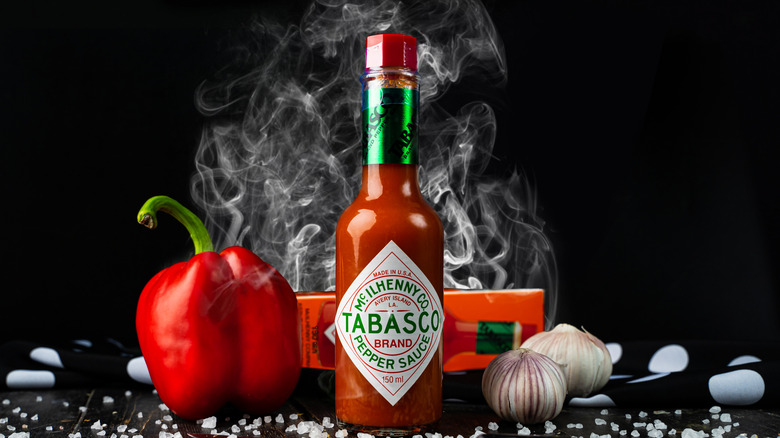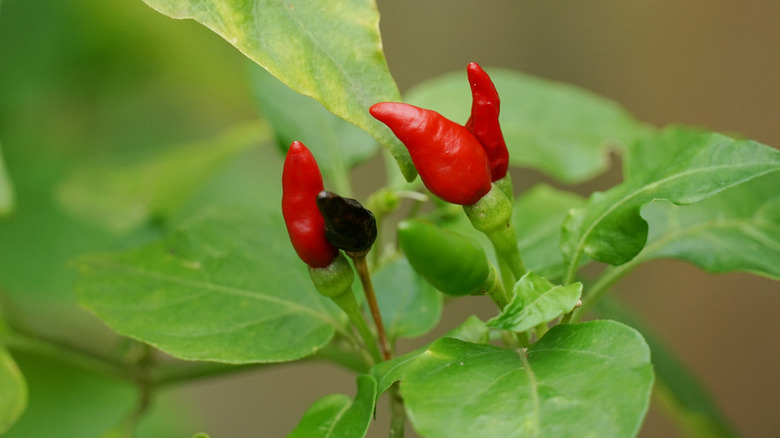The Old-Fashioned Way Tabasco Measures The Ripeness Of Its Peppers
Hot sauce — whether you believe Beyoncé actually carries it in her bag — is extremely popular in the U.S. According to a recent Instacart survey, 74% of Americans top their food with hot sauce and 45% use it at least once a week. As far as the most popular hot sauce brand ordered through the grocery-delivery service by weight, Huy Fong Sriracha reigns supreme. But coming in sixth is a staple in the hot sauce market — Tabasco.
Tabasco, one of the most-recognized and oldest brands of hot sauce, is bottled by the McIlhenny Company. According to the company's website, Edmund McIlhenny concocted his recipe from tabasco peppers, salt, vinegar that's aged in oak barrels in 1868 on Avery Island, Louisiana. He secured a patent for his sauce in 1870. Although there is some dispute (via Spruce Eats). It's possible he got his idea and seeds from New Orleans-entrepreneur Maunsel White. No matter the controversy, Tabasco has withstood the test of time.
A Tabasco tradition
The Tabasco website explains that the tabasco pepper seeds that McIlhenny planted to start the company came from Mexico or Central America. Years later, to make sure the peppers were ripe before picking, a test was developed and that same test is still used today. Workers in the field use "le petit bâton rouge," which is a little red stick used to measure the color of the peppers. The peppers should be the same color of the stick before they are picked. This tradition is continued today, the company says, to "ensure the quality of our harvest."
If you're ready to branch out from store-bought hot sauce and make your own recipe, Tabasco can still help. Turns out, if you're growing your own peppers at home, you can measure the ripeness by the same test. On the company's country store, you can buy your own "le petit bâton rouge" for just $3.99.

